Large prey birds, often referred to as “large bird of prey,” play a pivotal role in Florida’s vibrant and diverse ecosystem. Nestled in the southeastern region of the United States, Florida boasts a unique natural environment, characterized by its intricate web of wetlands, forests, and coastlines, providing an ideal habitat for an array of avian species. Among these, the presence of large prey birds in Florida is not only striking but essential to the intricate balance of the ecosystem.
The term “large prey birds” encompasses a variety of majestic raptors known for their imposing size, powerful beaks, and sharp talons. These remarkable birds, which include species such as Bald Eagles, Ospreys, Red-tailed Hawks, Great Horned Owls, Swallow-tailed Kites, Northern Harriers, and Peregrine Falcons, have made Florida their home. Each of these birds is adapted to unique niches within the state’s landscape, contributing to its ecological richness in distinct ways.
Florida’s geographical diversity, with its expansive coastline, vast wetlands, and lush forests, has allowed large prey birds to thrive in various ecosystems. From the majestic coastal habitats, where Ospreys reign supreme as the “fish hawk” to the inland woodlands where Great Horned Owls hold their nocturnal dominion, the large prey birds in Florida have adapted to a wide range of habitats. Their presence is not merely a testament to nature’s adaptability but also a reflection of the state’s commitment to conservation and wildlife protection.
Understanding the significance of large prey birds in Florida requires a deep dive into their biology, behavior, and impact on the local environment. These birds of prey are not merely fascinating creatures for birdwatchers and enthusiasts; they are vital contributors to the intricate web of life in Florida’s ecosystems. This article aims to shed light on the unique attributes of these birds, their hunting and feeding behaviors, the challenges they face, and the vital role they play in preserving the ecological balance.
Moreover, large prey birds in Florida hold cultural and ecological significance, as they symbolize the natural heritage of the state. The sight of a Bald Eagle soaring majestically over a Florida lake or the ethereal grace of a Swallow-tailed Kite slicing through the sky has captured the imagination of both residents and visitors for generations. These birds have become emblematic of the pristine natural beauty that Florida is known for.
Despite their significance, the large prey birds in Florida face a complex landscape of challenges, ranging from habitat loss and degradation to threats posed by human activities and environmental pollution. The delicate coexistence of these birds with urban development and agricultural practices raises concerns about their future. The quest to protect and conserve large prey birds, while simultaneously allowing for sustainable human activities, is a central theme of this exploration.
In this article, we will delve into the lives of these large prey birds, their hunting and feeding behaviors, and the impact they have on local wildlife populations. We will also discuss the various conservation efforts in place to safeguard these avian giants and the threats they encounter in Florida’s ever-evolving landscape. Their ecological significance and role in maintaining the balance within the intricate web of life will be highlighted, showcasing how they contribute to the state’s rich biodiversity.
Furthermore, we will examine the ongoing research and monitoring initiatives that seek to ensure the well-being of these species and offer insights into the coexistence of large prey birds and human activities in Florida. As we delve deeper into the world of these magnificent birds of prey, we’ll discover how Florida’s landscape is a haven for these majestic creatures and a testament to the state’s commitment to preserving its natural heritage.
Join us on this journey into the world of large prey birds in Florida, where we will uncover their vital role in the state’s ecological tapestry and the urgent need to protect and appreciate their presence in this unique corner of the world.
Types of Large Prey Birds in Florida
Florida’s diverse landscape and rich ecosystem are home to a remarkable array of large prey birds, which encompass a variety of species, each uniquely adapted to the state’s distinctive habitats. These magnificent raptors are integral to the ecological balance of Florida and play vital roles in the intricate web of life. In this section, we will delve into the lives of these avian giants, exploring their hunting and feeding behaviors, and their impact on the local wildlife populations.
Bald Eagles
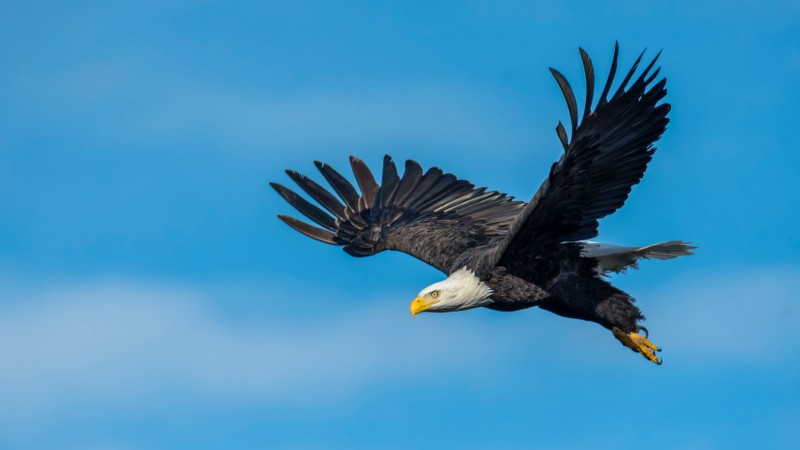
The Bald Eagle, Haliaeetus leucocephalus, is perhaps one of the most iconic and well-recognized large prey birds, not only in Florida but throughout the United States. With its distinctive white head and tail, this powerful bird of prey is often seen soaring gracefully through the skies. Their large nests, known as “large nests of a bird of prey,” can be found in various parts of Florida, often situated high in tall trees near water bodies.
Bald Eagles are known for their exceptional hunting skills, primarily focused on capturing fish, earning them the moniker “fish eagle.” They often glide over lakes and rivers, using their keen eyesight to spot fish swimming near the surface. Their powerful talons and sharp beaks make them adept at snatching fish from the water’s surface, creating a remarkable spectacle for onlookers.
In Florida, Bald Eagles are commonly found near large bodies of water, such as lakes, rivers, and coastal regions, which provide abundant fish resources. They also inhabit a variety of wooded habitats, and their nests are often situated in tall pine trees. These large black birds of prey are not only top predators in their ecosystems but also significant indicators of environmental health. Their presence is a testament to the health and vitality of Florida’s aquatic ecosystems.
Ospreys
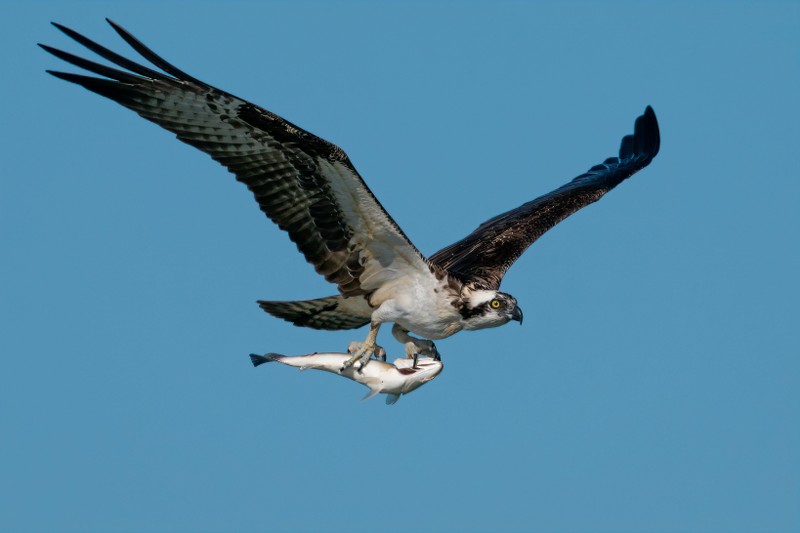
Ospreys, Pandion haliaetus, are another prominent large prey bird found in Florida, and they are commonly associated with the state’s coastal areas. These birds, sometimes referred to as “large prey birds,” have a distinctive appearance, with dark eyes and a striking white head. Ospreys have evolved to become expert fish hunters, and their hunting behaviors are a remarkable sight for anyone lucky enough to witness them.
Ospreys are known for their characteristic hunting technique: hovering over water bodies, including rivers, lakes, and coastal estuaries, before plunging feet-first to grasp fish with their powerful talons. Their ability to lock onto a target and adjust their position mid-dive is awe-inspiring, making them highly efficient hunters.
The large nests of a bird especially Ospreys are a common sight atop tall structures, such as utility poles and artificial platforms erected specifically for their use. These nests, often constructed from sticks, provide secure locations for raising their young, known as eyries. This choice of nest location can sometimes lead to human-wildlife conflicts, but conservation efforts aim to strike a balance between preserving these magnificent birds and ensuring human safety.
In Florida, Ospreys are not only celebrated for their hunting prowess but also for their contribution to the overall health of coastal ecosystems. By keeping fish populations in check, they play a vital role in maintaining the balance of these intricate food webs.
Red-tailed Hawks
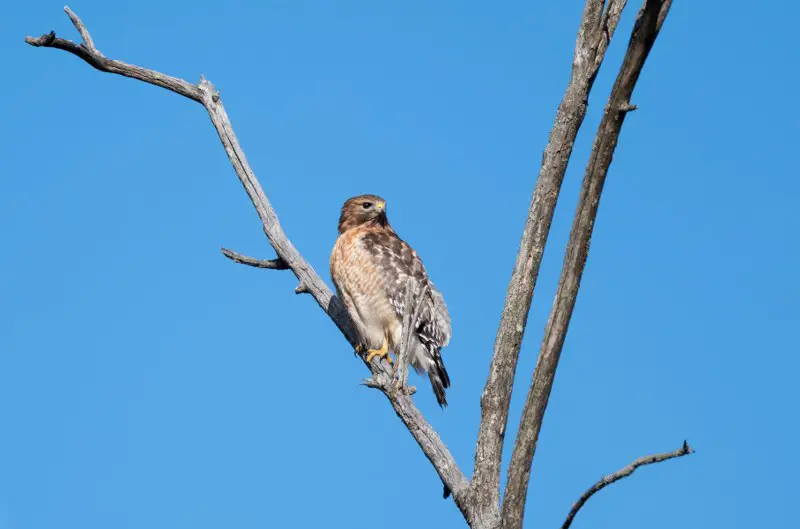
While Bald Eagles and Ospreys are often associated with Florida’s aquatic environments, Red-tailed Hawks, Buteo jamaicensis, represent a different facet of the state’s ecological diversity. Red-tailed Hawks are recognized as “large prey birds,” thanks to their robust build and characteristic red tails, though not all individuals exhibit this trait.
These large birds of prey are highly adaptable, and they can be found in a variety of habitats throughout Florida, from open grasslands and agricultural fields to wooded areas. They are known for their keen eyesight and powerful beaks and talons. Their hunting strategies typically involve perching on elevated vantage points, such as utility poles or trees, and scanning the ground for potential prey.
Red-tailed Hawks primarily prey on small mammals, making them effective hunters of rodents like rabbits, squirrels, and voles. Their hunting prowess makes them a valuable ally in controlling pest populations in agricultural regions.
The presence of Red-tailed Hawks in Florida is indicative of the state’s ecological diversity. Their adaptability allows them to thrive in various environments, contributing to the complex balance of species within each habitat. These large birds of prey are a testament to the interconnectedness of Florida’s wildlife and the vital role they play in the state’s ecosystems.
Great Horned Owls
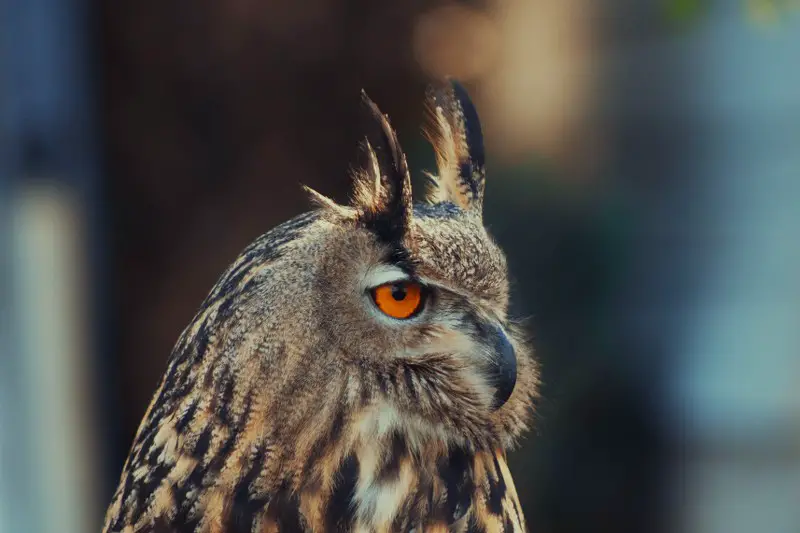
Among the large prey birds in Florida, Great Horned Owls (Bubo virginianus) possess an enigmatic charm. These powerful nocturnal predators are characterized by their distinctive ear tufts, which resemble horns and give them their name. Great Horned Owls are among the largest and most formidable North American owls, making them a formidable presence in Florida’s nighttime landscape.
Great Horned Owls are versatile hunters with a diverse diet that includes mammals, birds, and even larger prey such as rabbits and skunks. They have strong talons and excellent night vision, allowing them to ambush their prey effectively. These birds often occupy large nests situated in trees, abandoned nests of other birds, or even human-made structures like old buildings and barns.
In Florida, Great Horned Owls thrive in a variety of habitats, from dense forests to urban areas, demonstrating their adaptability and resilience. Their role as top nocturnal predators contributes to the overall health and balance of Florida’s ecosystems by controlling small mammal populations.
Swallow-tailed Kites
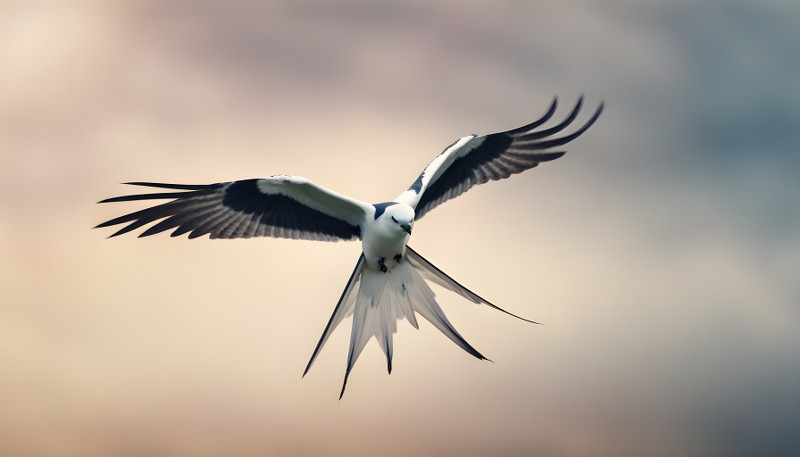
The Swallow-tailed Kite (Elanoides forficatus) is a striking large prey bird that graces the skies of Florida with its elegance and grace. These birds are known for their distinctively long, deeply forked tails and contrasting black and white plumage. They are also one of the large black birds of prey. Swallow-tailed Kites are migratory birds, traveling great distances to spend their summers in Florida, where they find ideal nesting and foraging grounds.
Swallow-tailed Kites are often associated with open woodlands, wetlands, and forested areas. Their striking aerial displays, which include acrobatic swoops and graceful maneuvers, captivate onlookers and mark them as one of Florida’s avian treasures. They are also known for their preference for large insects and small vertebrates as their primary prey.
Florida provides vital breeding and foraging grounds for Swallow-tailed Kites, and these birds play a unique role in the ecosystem. Their distinctive dietary preferences help control insect populations, benefiting the overall health of Florida’s forests and wetlands.
Northern Harriers
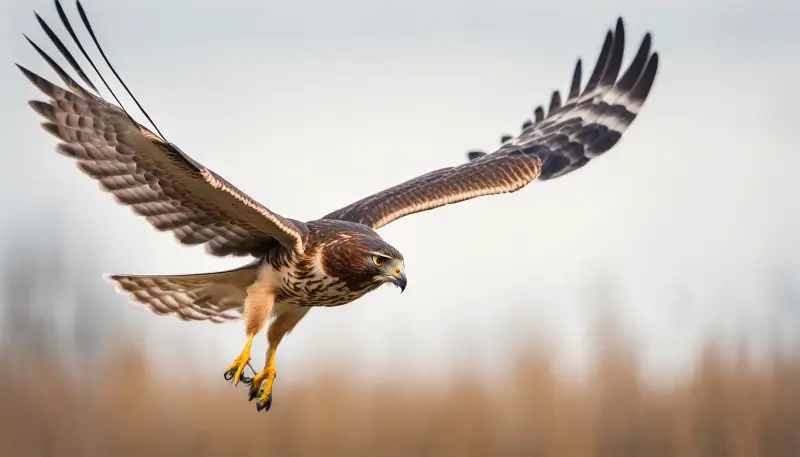
Northern Harriers (Circus Hudsonius) are “large prey birds” that add to the ecological diversity of Florida’s habitats. These raptors are recognized by their low-flying, hovering hunting style and distinctive white rump patches. Northern Harriers prefer open areas such as grasslands, marshes, and coastal habitats.
Northern Harriers are skilled hunters, preying on small mammals, birds, and even reptiles. They fly low over open terrain, scanning for movement before swooping down to capture their prey. This unique hunting strategy, which involves long wings and a facial disk for sound localization, sets them apart from other large birds of prey.
In Florida, Northern Harriers play a valuable role in controlling rodent populations in agricultural regions, making them beneficial to farmers. Their presence in the state reflects the diverse range of habitats that Florida offers and highlights their importance in maintaining ecological balance.
Peregrine Falcons
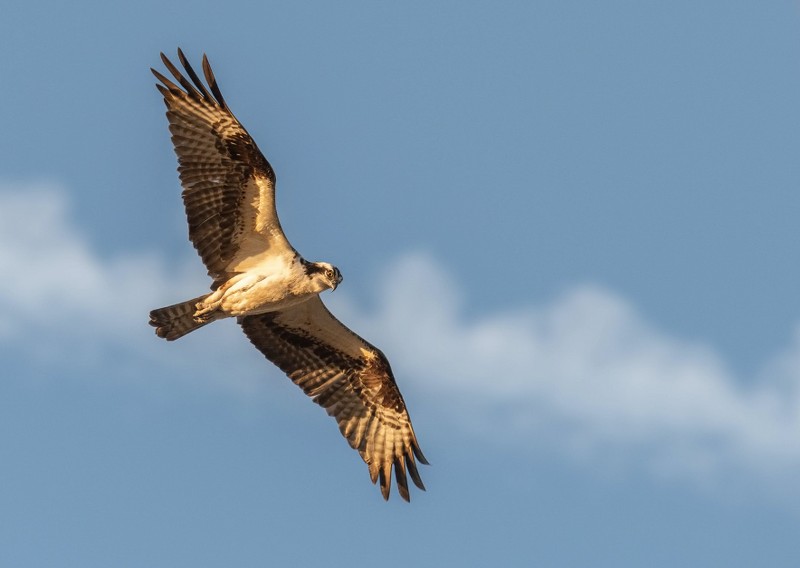
Peregrine Falcons (Falco peregrinus) are known for their incredible speed and aerial hunting abilities, making them one of the fastest birds in the world. With striking black markings on their heads and strong, curved beaks, these “large prey birds” are an impressive sight for bird enthusiasts and scientists alike.
Peregrine Falcons are primarily bird hunters, preying on other birds in mid-air pursuits. They are known for their remarkable hunting dives, known as stoops, in which they reach breathtaking speeds to capture their prey. Peregrine Falcons are highly adaptable, and they can be found in various environments, including urban areas with suitable nesting sites, cliffs, and coastal regions.
In Florida, Peregrine Falcons have made a remarkable recovery following decades of decline due to the effects of the pesticide DDT. Conservation efforts have played a crucial role in their resurgence. These falcons represent not only the adaptability of large prey birds but also the importance of continued conservation and protection efforts to safeguard their presence in Florida.
On another note, check out 8 Best Pet Birds That Talk!
The large prey birds of Florida, including Bald Eagles, Ospreys, Red-tailed Hawks, Great Horned Owls, Swallow-tailed Kites, Northern Harriers, and Peregrine Falcons, are an integral part of the state’s diverse ecosystems. Their unique hunting and feeding behaviors, each adapted to specific niches, contribute to the intricate web of life in Florida. These birds are not only emblematic of Florida’s natural beauty but also serve as key indicators of the state’s environmental health.
As we explore the lives and roles of these avian giants, we also encounter the challenges they face in the modern world. From habitat loss and pollution to human disturbance, the large prey birds of Florida grapple with a complex landscape of threats. Conservation efforts are pivotal in ensuring their continued existence and the preservation of the ecological balance they maintain.
In the following sections, we will delve deeper into the conservation efforts in place to safeguard these magnificent birds, the threats they encounter, and their ecological significance in maintaining the balance within Florida’s intricate food webs. Additionally, we will discuss ongoing research and monitoring initiatives, as well as the prospects for the coexistence of these large prey birds and human activities in Florida’s ever-evolving landscape.
Hunting and Feeding Behavior
The hunting and feeding behaviors of large prey birds are truly awe-inspiring. Each species has evolved specific strategies for capturing prey, reflecting their adaptability to different ecological niches. These behaviors shed light on their ecological significance.
Bald Eagles: Aerial Mastery
Bald Eagles are iconic fish hunters. They soar gracefully above water bodies, using keen eyesight to spot fish near the surface. Their swooping dives and precise talon strikes capture fish, contributing to ecosystem balance.
Ospreys: Aerial Fishing Experts
Ospreys are known for their hovering hunting style. They lock onto fish in the water, then plunge feet-first to seize prey with powerful talons, an aerial display that showcases their mastery of hunting on the wing.
Red-tailed Hawks: Ambush Predators
Red-tailed Hawks use perches to scan the ground for small mammals. Their precise pounces capture rodents, demonstrating their role in pest control and maintaining ecosystem balance.
Great Horned Owls: Nocturnal Stealth
Great Horned Owls are nighttime hunters with silent, swift descents on prey. Their diet includes small mammals, birds, and even other raptors, contributing to nocturnal ecosystem health.
Swallow-tailed Kites: Aerial Acrobatics
Swallow-tailed Kites excels at capturing flying insects mid-air, performing remarkable aerial acrobatics. Their diet controls insect populations, benefiting Florida’s forests and wetlands.
Northern Harriers: Low-Flying Hunters
Northern Harriers fly low over open landscapes, tracking small mammals, birds, and reptiles. Their agility and low-hunting strategy play a role in controlling rodent populations.
Peregrine Falcons: High-Speed Pursuit
Peregrine Falcons are known for their extraordinary speed and aerial pursuit of other birds. They capture prey in mid-air, helping maintain ecological balance.
Understanding these hunting and feeding behaviors not only showcases their remarkable adaptations but also highlights their vital roles in Florida’s ecosystems.
Ecological Significance
The ecological significance of large prey birds extends far beyond their striking appearances and impressive hunting skills. These majestic raptors are integral components of the state’s ecosystems, contributing to biodiversity, food web dynamics, and even local economies.
i) Role in Maintaining Ecosystem Balance
Large prey birds, by occupying the top of the food chain, play a pivotal role in controlling populations of their prey species. For example, Bald Eagles and Ospreys help manage fish populations, preventing overconsumption and ensuring the ecological health of aquatic environments. Red-tailed Hawks and Great Horned Owls contribute to controlling small mammal populations, preventing crop damage, and promoting ecological balance.
In Florida’s diverse habitats, these birds act as regulators, maintaining the stability and integrity of the ecosystems they inhabit. Their presence ensures that no single species becomes overly dominant, which ultimately benefits the health of the entire ecosystem.
ii) Contribution to Biodiversity
The presence of large prey birds in Florida adds to the state’s biodiversity. Each species has its niche, and its interactions with other species, including prey and competitors, contribute to the overall richness of the region’s wildlife. The biodiversity they support extends to flora and fauna throughout their respective ecosystems.
For example, the Swallow-tailed Kite’s consumption of large insects helps control insect populations, which, in turn, affects plant health and diversity in wetlands and forested areas. These raptors indirectly influence the composition of plant communities, demonstrating their influence on various aspects of biodiversity in Florida.
iii) Contributions to Ecotourism and Local Economies
The charismatic nature of large prey birds has made them a focal point for ecotourism. Birdwatchers, nature enthusiasts, and tourists flock to the state to witness the remarkable aerial displays, nesting behaviors, and hunting techniques of these birds. This tourism not only provides recreational opportunities but also contributes to the local economies of regions where these birds are found.
Furthermore, the conservation efforts and research related to these birds have generated employment opportunities in wildlife management, education, and research. The presence of these avian giants bolsters Florida’s status as a hub for eco-tourism and wildlife-related businesses.
Large prey birds are not just majestic creatures of the wild; they are keystone species that have a profound impact on the state’s ecosystems and human society. This article has explored the incredible diversity of large prey birds, from the iconic Bald Eagles and Ospreys to the stealthy Great Horned Owls and the swift Peregrine Falcons. Their hunting and feeding behaviors, each tailored to specific niches, exemplify the intricate adaptations that make them such formidable raptors.
Conclusion
The ecological significance of large prey birds cannot be overstated. They are vital in maintaining ecosystem balance, contributing to biodiversity, and driving local economies through ecotourism. Their continued presence in Florida is not just a testament to the state’s rich natural heritage but also a call to action for the protection and appreciation of these avian giants.
As we look to the future, the coexistence of large prey birds and human activities in Florida will remain a central concern. Striking this balance is crucial for the health of ecosystems and the well-being of these magnificent birds, ensuring that future generations can continue to marvel at their grace and power in the Florida skies. The fate of these large prey birds is intrinsically linked to the well-being of Florida’s natural world, and it is our collective responsibility to ensure their survival for generations to come. For more interesting facts, check out our blog.

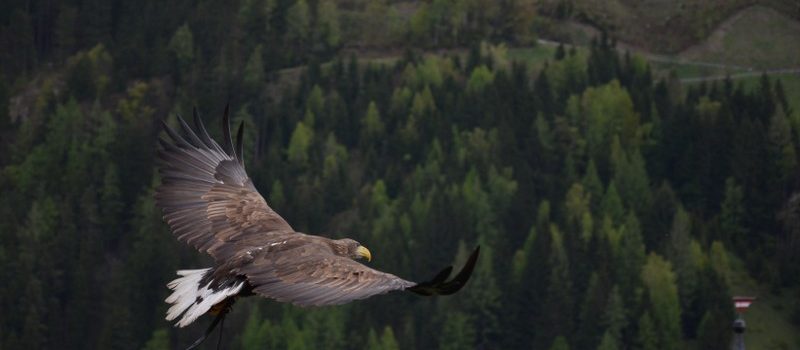




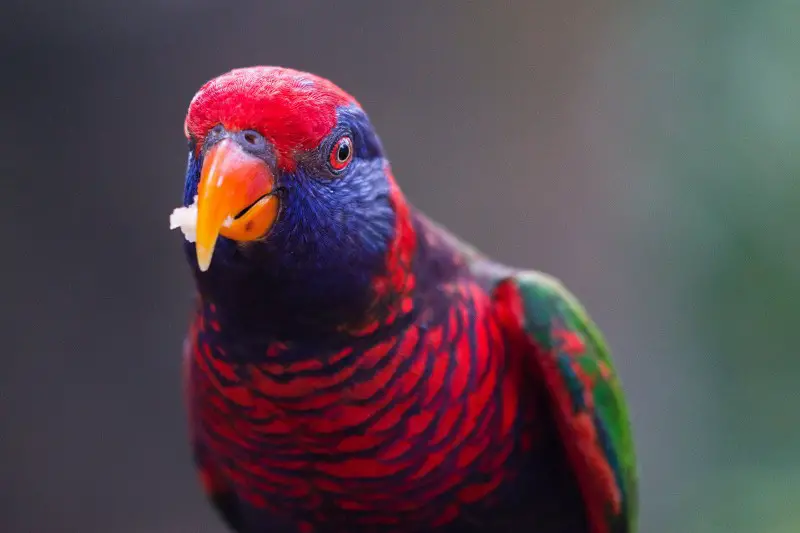
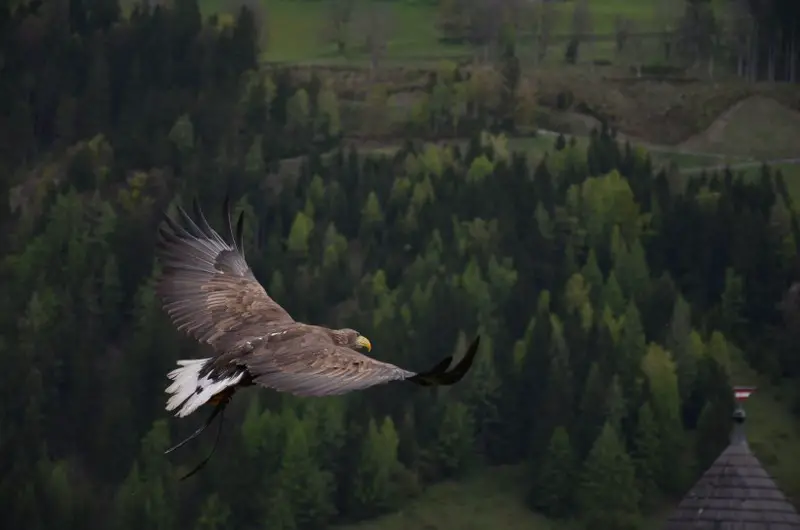





One Response